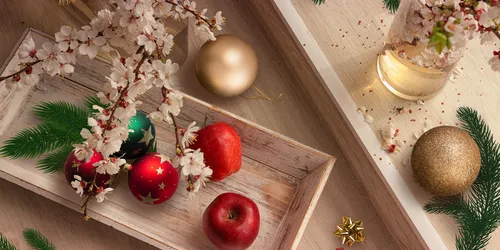Advent with DB Regio Bayern
Five typical Bavarian Christmas traditions!
These five Christmas traditions are at home in Bavaria! Have you ever heard of cucumbers on the Christmas tree? Or do you know what Adam and Eve have to do with a particularly beautiful Bavarian Advent custom? We have compiled the five most beautiful Christmas customs in Bavaria for you.
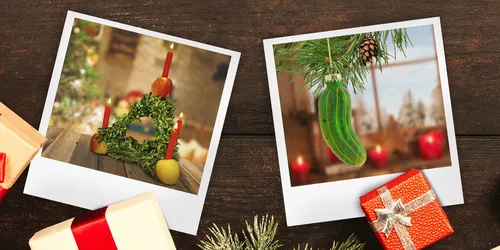
Compliments for the tree - short ones for the guests
What could be more atmospheric at Christmas than the decorated tree in the living room? This was taken at the end of the 19th century between the Allgäu and the Danube as a welcome hook to establish a beautiful custom: the Christmas tree praise. It is a sociable and humorous tradition that brings people together. It involves spontaneously ringing the doorbells of neighbors, friends and acquaintances to praise the decorated fir tree to the skies. The more creatively the Christmas tree is decorated, the more often it is "praised". As a reward, there is usually a schnapps. There are two theories about the origin of these traditions: Outside the holidays, there was little time for socializing, especially in agriculture, because people worked so hard all year. During the Christmas season, people would make up for it with an extensive Christmas tree-lifting party. Another theory is that it makes little sense for the people of Allgäu to decorate a tree if hardly anyone sees it afterwards. In the meantime, the drinking custom has spilled over into Franconia and the Upper Palatinate. Here, the convivial tradition is celebrated every year under the name of Christbaumschau.
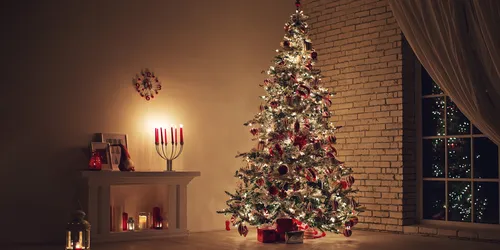
Oh Christmas tree, oh cucumber tree, how beautiful is your decoration!
Green glass cucumbers on the Christmas tree - did you know that this trend has Bavarian roots? The most famous legend is about the soldier Hans Lauer - called John Lower - who came from Bavaria. He was taken prisoner during the American Civil War and fell so ill that he asked for a pickle before his supposed last breath. This humble request was granted out of compassion. Thereupon Lower recovered miraculously within a very short time. In gratitude, the Bavarian soldier hung a green pickle on his Christmas tree every year. Among Americans, John Lower's cucumber story has persisted over the years. Since then, the "Christmas pickle" has decorated their Christmas tree as a lucky charm as a matter of course. They are convinced that this custom is commonplace in Germany. In fact, the unusual Christmas decoration is more widespread in the USA than in Germany.
Less heroic is the second theory about the Bavarian origin of the Christmas vegetable decoration: At the beginning of the 20th century, most families in Coburg, Upper Franconia, could not afford presents for each of their children. Therefore, a cucumber was carefully hidden among the fir branches. Whoever spotted it first got the gift. In some American families, the game of hiding the cucumber is still celebrated today. Whoever finds it gets to open his gift first. In small steps, the cucumber pendant is returning to its Bavarian origins. In the meantime, it can even be bought at larger Christmas markets and in many stores in Bavaria.
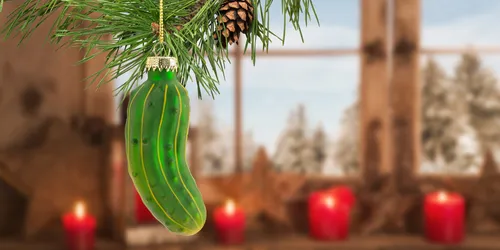
Mystical herbal cleansing for new energy
When the year comes to an end, an ancient ritual takes place mainly in the Bavarian Alpine region: incense burning. Especially in agriculture, the ancient custom is deeply rooted. The twelve Rau(c)hnächte are held between December 21 and January 6. The holidays are excluded from this, as Christmas peace is to be preserved. A copper pan with hot coals and dried herbs is carried through all rooms. In Bavaria to South Tyrol, the purification ritual is additionally performed on the farm and in the stable. Legend has it that animals can speak and predict the future during the Rauhnächten.
The special energy of the Rauhnächte has now also arrived in the city. Many use this special time for inner peace and to recharge their batteries. Depending on the choice of herbs, different effects can be achieved: St. John's wort can be used for depressive moods, angelica for positive room energies and sage for relaxation. In the past as well as today, the incense ritual serves to release emotional ballast in order to create space for the new with a clear mind.
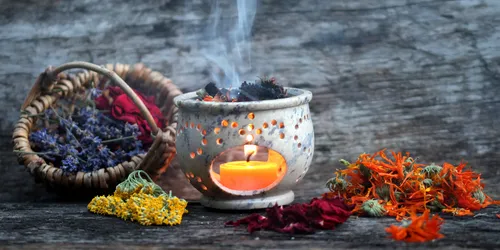
The realization from paradise
You've probably seen this popular, triangular Advent decoration at friends' or family's houses: the tradition of the Paradeiserl goes back to a custom in Old Bavaria that is over 400 years old. The triangular pyramid is a predecessor of the Advent wreath and has even a longer tradition than the Christmas tree. It consists of six wooden sticks of equal length, connected at the ends with three red apples. The fourth apple is enthroned on the top of the pyramid. The old Bavarian-Austrian custom can be traced back to the Middle Ages. The name derives from the "Adam and Eve Day" on December 24, which we know as Christmas Eve. Originally, the Paradeiserl is a symbol for the fall of man in paradise. The red apples remind us of the forbidden tree of knowledge and the triangular shape stands for the "Trinity". According to the Bible, Christians owe to it the redemption of Adam's guilt of sin through Christ's birth.
The Paradeiserl was affordable for almost every Bavarian household, because it was only natural materials. Often the sticks were still decorated with carvings, ribbons or fir branches. Those who could afford it put a candle in each apple. Thus, almost everyone could bring a piece of paradise home. In some parlors, the simple Advent decorations were placed on a plate with cookies, nuts and dried fruit.
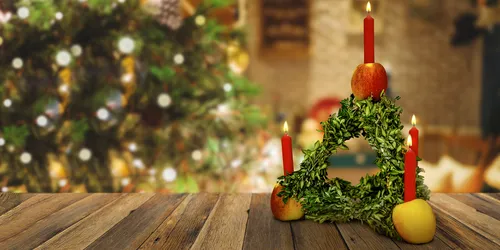
The flowering cherry branch oracle
On St. Barbara's Day on December 4, it is the custom in Bavaria to cut branches from a cherry tree and place them in a vase filled with water. The warmth of the room will cause new buds to form, which will be in full bloom by Christmas at the latest. True to the traditional farmer's rule, "Buds on St. Barbara, there are blossoms by Christmas." The Barbara branches also had an oracular function for Bavarian farmers in earlier times: from the number of blossoms that sprouted, they inferred the coming harvest. For the single women, completely different questions were in the foreground: they carved the name of their dream man into the branch bark. When the Barbara branches blossomed, their love was reciprocated and they could look forward to an upcoming wedding. The tradition of cherry branches dates back to the imprisonment of St. Barbara. According to legend, her father had her imprisoned because she refused to take an unbaptized man as her husband. When she wet a cherry tree branch with her drinking water in her cell, the blossoming branches gave her comfort and confidence.
